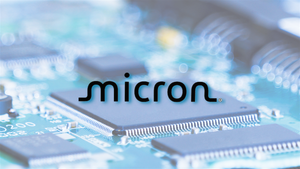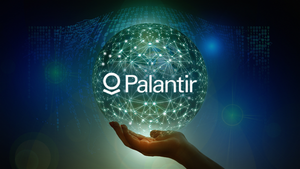
The artificial intelligence landscape is in the midst of a seismic shift, as a new generation of agile innovators and specialized chip providers rapidly carves out significant market share, directly challenging the long-held dominance of established tech giants. Companies like Anthropic and Databricks are redefining the AI software and platform space, while chipmakers AMD and specialized cloud provider CoreWeave are intensifying the battle for critical compute infrastructure. This dynamic evolution signals a reordering of power within the technology sector, promising accelerated innovation but also raising complex questions about market concentration, ethical development, and the future of work.
A Reshaping of the AI Ecosystem: How New Players Are Forging Ahead
The current AI revolution is not solely being dictated by the behemoths that pioneered much of its foundational research. Instead, a diverse array of companies is leveraging strategic specialization, open-source initiatives, and a keen focus on enterprise needs to disrupt the status quo. This disruption is happening across foundational models, data management platforms, and the very hardware that powers AI.
Anthropic, founded by former OpenAI researchers, has emerged as a formidable competitor in the large language model (LLM) arena with its Claude chatbot. Its core strategy revolves around "Constitutional AI," prioritizing safety, ethical guidelines, and responsible development—a critical differentiator for enterprises wary of AI's potential pitfalls. This focus has translated into impressive gains in the enterprise market, with reports indicating Anthropic's enterprise share growing from 12% to 32%, while OpenAI's saw a decline. The company has also garnered substantial investment, including a $4 billion investment from Amazon (NASDAQ: AMZN), solidifying its position as a major player. Anthropic's proactive stance on AI's societal impact, particularly concerning job displacement, further highlights its distinct approach.
Databricks is another potent force, unifying the fragmented worlds of data engineering, data science, and machine learning into a single, cohesive platform. By simplifying data management, overcoming silos, and accelerating AI-driven insights, Databricks directly competes with the disparate offerings of major cloud providers. Its integration of generative AI features and emphasis on small language models cater to practical enterprise deployment needs. The market's recognition of Databricks' critical role is evident in its recent $1 billion raise, valuing the company at a staggering $100 billion, following a previous $10 billion equity and $5 billion debt round. With over 10,000 customers, Databricks demonstrates strong traction in helping businesses operationalize their data for AI.
In the crucial realm of AI accelerators, Advanced Micro Devices (NASDAQ: AMD) is aggressively challenging NVIDIA's (NASDAQ: NVDA) near-monopoly. AMD's CEO, Lisa Su, has asserted that their new MI350 series chips, such as the MI355 and MI355X, offer significantly faster inference performance and greater efficiency compared to NVIDIA's B200 and GB200 chips, with the MI355X specifically aiming to match the performance of NVIDIA's "more expensive and complex GB200" at a lower price point. AMD's investment in its ROCm open software stack aims to provide a viable alternative to NVIDIA's proprietary CUDA, facilitating developer migration. Strategic partnerships with tech giants like Meta Platforms (NASDAQ: META), Alphabet's Google (NASDAQ: GOOGL), Oracle (NYSE: ORCL), Microsoft (NASDAQ: MSFT), and even OpenAI underscore AMD's growing influence. The company projects $4.5 billion from its new AI chips in 2024, aiming for a significant slice of the projected $500 billion AI chip market by 2028.
Complementing the hardware push is CoreWeave, a specialized cloud provider focusing exclusively on GPU-intensive compute resources for AI and machine learning. CoreWeave offers a cost-effective and highly optimized alternative to hyperscale cloud providers for companies scaling their AI operations. Its business model thrives on renting out servers densely packed with NVIDIA GPUs, directly addressing the immense demand for AI training and development. A strong partnership with NVIDIA, which holds a 7% stake, and a massive five-year contract worth up to $11.9 billion (including a $4 billion expansion) to supply infrastructure to OpenAI, highlight CoreWeave's strategic importance. The company reported robust growth, with over $1.2 billion in Q2 2025 revenue and a $30.1 billion backlog, further demonstrating its capacity and market relevance.
The Shifting Scales: Who Wins and Who Loses in the AI Arms Race
The emergence of these specialized players has profound implications for the established order. While giants like NVIDIA (NASDAQ: NVDA) continue to dominate the high-end AI chip market, AMD’s aggressive push with performance-competitive chips and an open-source software alternative poses a direct threat to NVIDIA’s ecosystem lock-in. NVIDIA’s powerful CUDA platform has been a significant barrier to entry, but AMD’s ROCm could gradually erode that advantage, offering developers more choice and potentially driving down costs.
Established cloud providers like Amazon Web Services (AWS) (NASDAQ: AMZN), Microsoft Azure (NASDAQ: MSFT), and Google Cloud (NASDAQ: GOOGL), while investing heavily in their own custom AI accelerators, face new competition from specialized cloud infrastructure providers like CoreWeave. CoreWeave's focus on GPU-centric infrastructure at potentially lower costs could siphon off demanding AI workloads, forcing the hyperscalers to innovate further in pricing and specialized services. However, the hyperscalers still benefit from their vast existing customer bases and integrated service portfolios, providing a broader ecosystem that many enterprises prefer.
In the foundational model space, OpenAI and Google (NASDAQ: GOOGL) are seeing their early leads challenged by Anthropic's safety-first approach and strong enterprise traction. As enterprises become more sophisticated in their AI adoption, the emphasis on explainability, ethics, and governance, which Anthropic champions, could become a decisive factor. Similarly, Databricks' unified data and AI platform directly competes with the data warehousing and machine learning services offered by the major cloud providers, forcing them to refine their own integrated offerings. The "winners" will likely be those who can adapt quickly, either through robust internal innovation, strategic acquisitions, or by forging powerful alliances. The "losers" may be those who fail to recognize the nuanced demands of the evolving AI market and cling to monolithic, one-size-fits-all solutions.
Industry Tremors: Broader Implications of a Diversifying AI Landscape
This competitive realignment extends beyond individual company fortunes, signaling broader shifts across the industry. The democratization of AI is perhaps the most significant trend, with a flood of venture capital and over 250 foundation models now available. This proliferation suggests that barriers to entry are lowering, fostering a more vibrant, if chaotic, ecosystem where innovative startups can directly compete with, or even outperform, established players. This intense competition is driving unprecedented innovation, pushing the boundaries of what AI can achieve.
The industry is also transitioning from a capital expenditure (CapEx) phase, where massive investments in foundational AI infrastructure were paramount, to an operational expenditure (OpEx) phase. The focus is now shifting to monetizing and integrating AI into existing services and products, allowing agile AI companies to differentiate themselves through speed and rapid deployment of solutions. This shift necessitates flexible and scalable infrastructure, which specialized providers like CoreWeave are perfectly positioned to offer.
While tech giants develop their own custom AI accelerators (Google's TPUs, Amazon's Inferentia, Microsoft's custom chips) to reduce reliance on NVIDIA, companies like CoreWeave specialize in providing raw GPU compute power, enabling a hybrid approach for enterprises. Strategic alliances are becoming commonplace, with partnerships between large cloud providers and AI startups driving innovation but also attracting regulatory scrutiny regarding potential anti-competitive practices like tying or bundling. Governments are increasingly looking towards "sovereign AI" initiatives, with companies like CoreWeave securing contracts to localize AI infrastructure, reducing reliance on foreign cloud providers. The overwhelming majority (85%) of companies globally plan to increase their AI investments in the next 12 months, underscoring AI's recognized importance as a decisive factor for competitiveness, productivity, and new capabilities across all sectors.
The Road Ahead: Navigating the Next Chapter of AI Development
The immediate future of the AI market will likely be characterized by an intensification of these competitive dynamics. Established tech giants will undoubtedly respond with strategic pivots, increased R&D, and potentially aggressive acquisitions to maintain their standing. We can expect to see deeper integration of AI capabilities across their entire product portfolios, more compelling pricing for their cloud AI services, and further investments in their proprietary hardware and software ecosystems.
For emerging players, the challenge will be to scale their offerings while maintaining their innovative edge and specialized focus. Companies like Anthropic will need to continually advance their models and safety protocols, while Databricks will aim to further embed its unified platform within enterprise workflows. AMD's success hinges on closing the software gap with NVIDIA's CUDA and securing even larger enterprise and data center adoption. CoreWeave will need to rapidly expand its infrastructure capacity to meet escalating demand, potentially through further acquisitions and strategic financing.
New market opportunities will emerge in specialized AI applications, ethical AI governance, and customized model development. The focus on efficiency and smaller, task-specific models is also likely to grow, balancing performance with resource consumption. Investors should watch for companies that can demonstrate clear ROI for their AI solutions, strong enterprise adoption, and sustainable competitive advantages, whether through unique technology, a superior business model, or strategic partnerships. The long-term outlook points to a multi-polar AI landscape, where diverse players co-exist and compete, fostering a more robust and innovative ecosystem for the benefit of all.
A New Dawn for AI: Concluding Thoughts on a Reshaped Market
The rise of players like Anthropic, Databricks, AMD, and CoreWeave signals more than just new entrants; it marks a fundamental reshaping of the AI competitive landscape. The days of a few dominant tech giants controlling the entire AI stack may be giving way to a more diverse, specialized, and competitive ecosystem. This shift is driven by a focus on niche needs, innovative architectures, and strategic collaborations that collectively challenge the traditional order.
Moving forward, the AI market will likely be characterized by continued innovation at an accelerated pace, fueled by intense competition. Investors should keenly observe not just the technological advancements but also the strategic alliances, regulatory responses, and the ability of companies—both established and emerging—to adapt to rapidly changing market demands. The emphasis on ethical AI, data governance, and efficient, scalable compute will be paramount.
The lasting impact of this period will be a more mature and resilient AI industry, where specialized expertise holds significant value, and where the race to build and deploy artificial intelligence is no longer confined to a select few. This dynamic environment promises to unlock unprecedented capabilities, but also requires careful navigation to ensure responsible development and equitable access to the transformative power of AI. The coming months will reveal which players successfully solidify their positions and which strategies prove most effective in this exhilarating new chapter of artificial intelligence.






